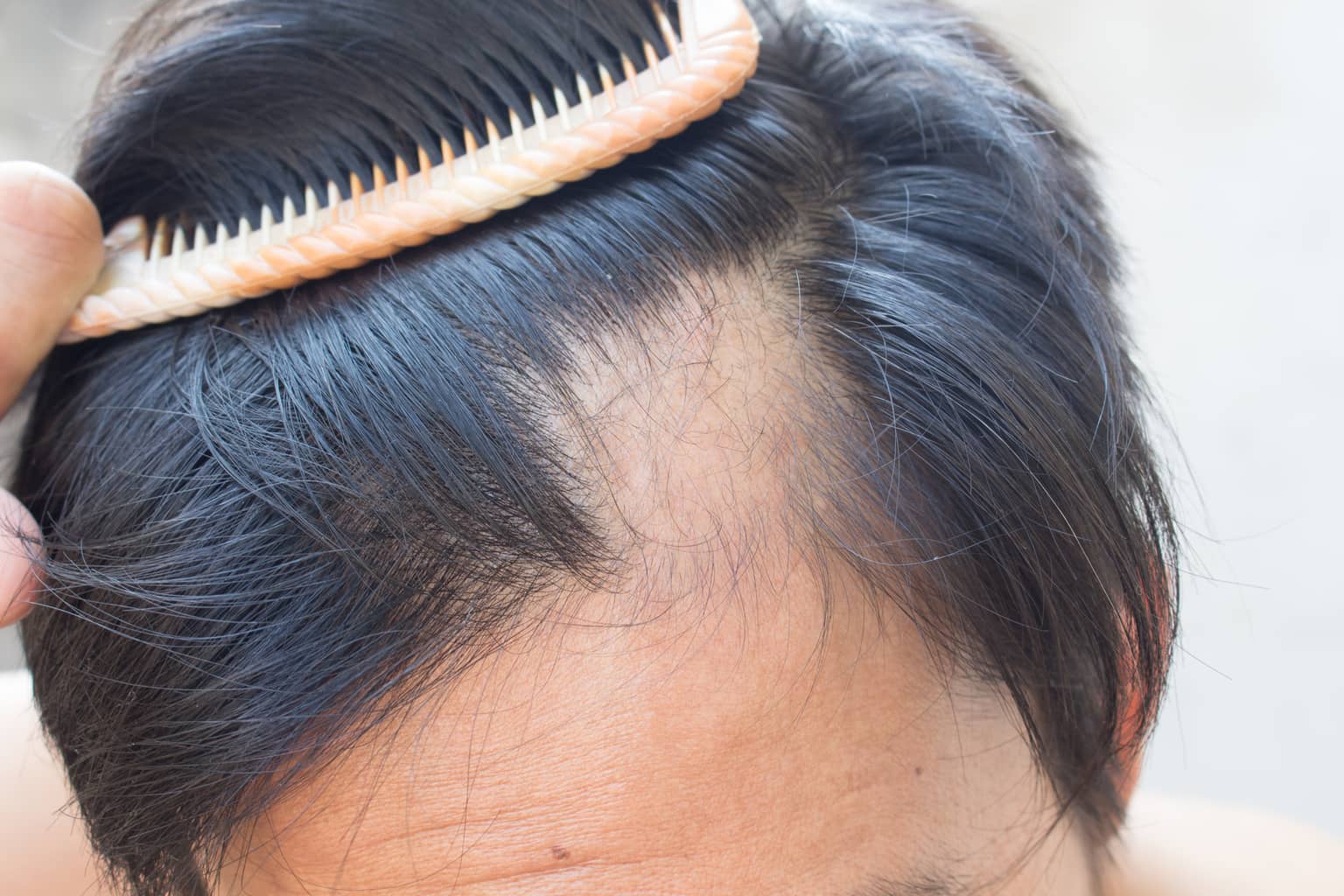
[cmamad id=”8133″ align=”center” tabid=”display-desktop” mobid=”display-desktop” stg=””]
It’s no secret that many men lose their hair as they age.
There are plenty of theories, but high DHT is the most common one.
You know, DHT and hair loss just land naturally in the same sentence.
But, there are other things working against you keeping your hair.
Stress for example.
The body produces the adrenal hormone cortisol to cope with stress.
And high levels of adrenal hormones lead to hair loss.
Many early studies show that an adrenalectomy causes rapid hair growth in mice.
An adrenalectomy is what it sounds like — a surgery that removes the adrenal glands.
And without the adrenal glands, your body can’t produce adrenal hormones.
[cmamad id=”8134″ align=”center” tabid=”display-desktop” mobid=”display-desktop” stg=””]

It is of particular interest that when the production of adrenal hormones ceases, due to adrenal ablation, hair grows at a more rapid rate, thus indicating that the adrenal cortex, at its normal level of activity, may inhibit the growth of hair.
The application of cortisol shows this effect effectively.
You can induce bald spots easily by applying this adrenal hormone.
No other hormone, not even DHT, shows such a dramatic effect.
And doctors know all about this effect.
Dermatologists routinely warn against hair thinning with topical hydrocortisone prescriptions.
Oddly, DHT stimulates male hair growth in early stages of development.
But too much turns around and causes hair loss? HMMMM.
Scholarly papers often remark on this paradox.
How one circulating hormone has such contrary effects on a single tissue depending on its body site is not clear; this biological paradox alone makes androgen action in hair follicles very intriguing.
Very intriguing indeed.
I think it was Alan Watts who once said, “A paradox is what you have remaining after you apply a bad theory.”
And this may be the case with DHT.
Part of this paradox concerns estrogen.
While DHT does inhibit hair growth to an extent, so does estrogen.
Men tend to have too much estrogen when they get older — but so do women.
That doesn’t make much sense — what causes hair loss for real?
And how does one explain the sex differential?
Why do men have more hair loss than women?
There must be a better explanation than the usual testosterone/estrogen dichotomy to explain different effects on the genders.

There may be.
Men produce more adrenaline than women do in response to stress.
And they even have a higher baseline level on average.
When the body metabolizes all that adrenaline, it produces a lot of a compound called adrenochrome.
Which is also a known culprit in hair loss.
Adrenochrome slows hair growth considerably, a fact noted by its discoverers Hoffer and Osmond.
You might find this interesting — the body metabolizes adrenaline by adding oxygen to the adrenaline molecule.
That oxidization produces adrenochrome.

Adrenochrome may be to blame for certain stress-related odd behaviors.
It’s mildly psychedelic and affects behavioral issues as well.
Plus, it doesn’t just slow down hair growth, it slows down skin and fingernail growth as well.
Now, to fight adrenochrome production, you can take niacin.
Niacin causes hair, skin, and nail cells to grow more quickly.
The second case was a man in his early thirties beginning to lose his hair. After three months of medication with nicotinic acid his hair returned.
Niacin functions as a vasodilator, increasing blood to the extremities.
That includes the smallest capillaries in the crown of the head.
Here’s something to think about — if DHT is the biggest problem, hair loss would happen everywhere.
Instead, it happens just on the head, where the smallest blood vessels clog with adrenal hormones quickest.
DHT is in the blood, so it flows everywhere — but would NOT be able to reach the blocked capillaries.
But plenty of DHT would reach the arms, legs, back and so on.
If DHT causes the hair loss, those areas should go bare first.
Plus, there’s the correlation between heart attacks and balding to consider.
Both happen when there is poor circulation and blocked blood vessels.

This medium-sized study included 665 men admitted for heart attack and 772 random controls.
The correlation was high — the risk ratio for severe baldness and heart attack was 3.4.
The author cannot explain this based on the DHT paradigm.
But that doesn’t stop him from speculating something ridiculous about blood lipids and DHT.
Hair loss being one of the side effects of stress seems more logical to me.
Let’s lay it out.
We know that in experiments on skin cells, hydrocortisone causes insulin resistance.
It inhibits the ability of cells to use glucose properly and lowers oxygen consumption.
Now, adrenochrome constricts the blood vessels, cutting off circulation to small capillaries.
As a result, you have hair loss.
See, simple.
As a side note — wearing a hat too often can also cut off circulation to those small capillaries and speed up hair loss.
So, besides losing your hat, how do you prevent hair loss?
You can try niacin or vitamin B6.
Both proved useful in clinical tests, although B6 was less effective.
But they do both lower production of adrenochrome.
Or you could try lower your stress levels.
I know — that may be easier said than done.
———————-

- Androgens and Hair Growth
http://onlinelibrary.wiley.com/doi/10.1111/j.1529-8019.2008.00214.x/full - THE RELATIONSHIP OF THE ADRENAL, THYROID, AND PITUITARY GLANDS TO THE GROWTH OF HAIR
https://deepblue.lib.umich.edu/bitstream/handle/2027.42/74077/j.1749-6632.1951.tb31970.x.pdf?sequence=1 - A Case-Control Study of Baldness in Relation to Myocardial Infarction in Men
http://www.sjsu.edu/faculty/gerstman/misc/Lesko1993.pdf - The Adrenochrome Hypothesis of Schizophrenia Revisited
http://orthomolecular.org/library/jom/1981/pdf/1981-v10n02-p098.pdf - Sex Difference in Catecholamine Reactions to Stress and its Relevance to Coronary Heart Disease
http://www.tweelingenregister.org/nederlands/verslaggeving/NTR_publicaties/Doornen_PCC_1985.pdf - THE HALLUCINOGENS (Hoffer and Osmond)
https://erowid.org/library/books_online/hallucinogens_hoffer_osmond.pdf
- Hair Loss | Alopecia | Alopecia Areata | MedlinePlus
https://medlineplus.gov/hairloss.html - Hair Loss - Harvard Health
https://www.health.harvard.edu/a_to_z/hair-loss-a-to-z

Leave a Reply